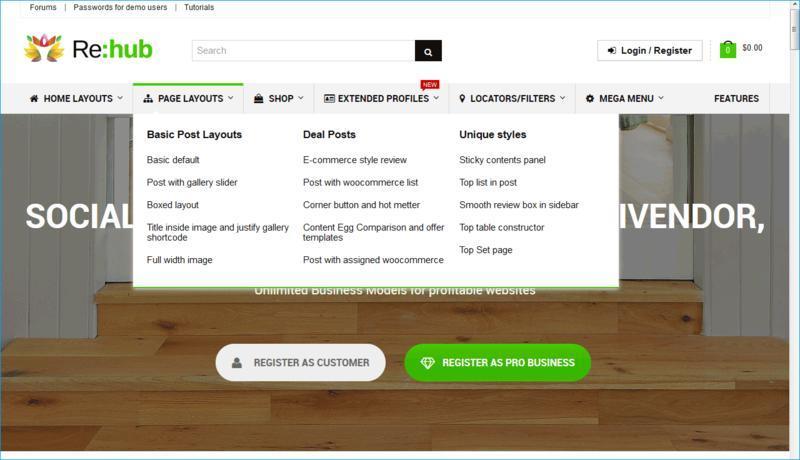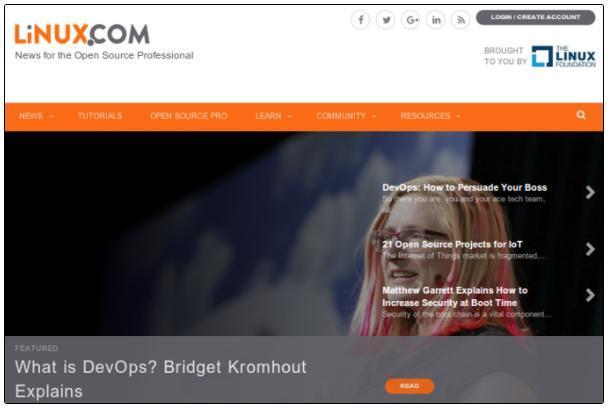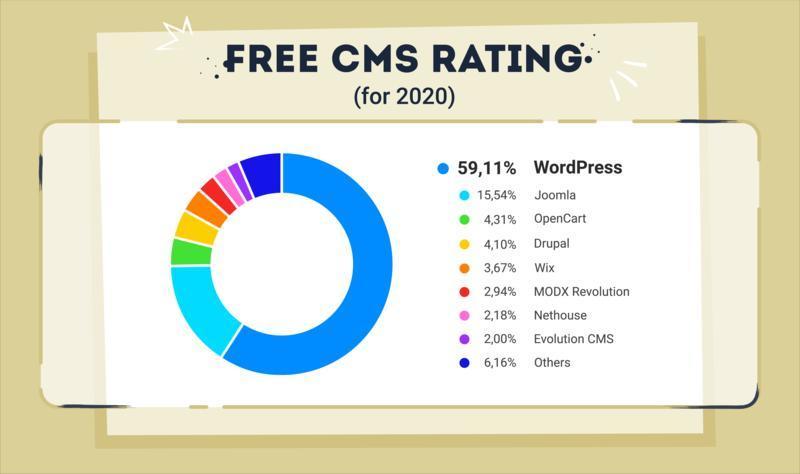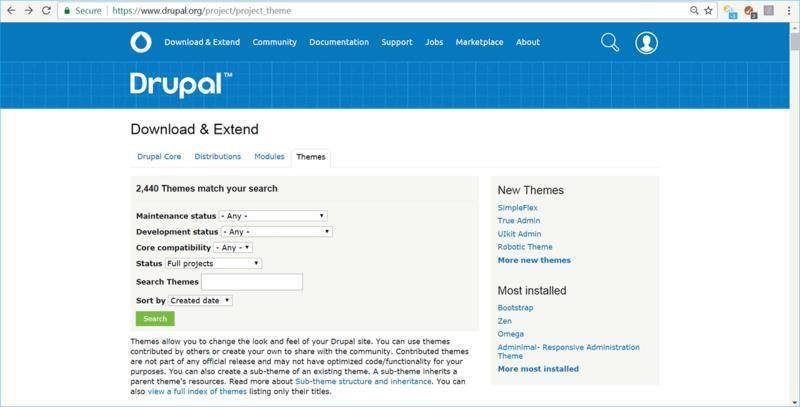Content management systems are designed to help us build and handle websites. And although most of them cope with all tasks in a similar way and quite successfully, there're still differences between these solutions. Therefore, the final choice of the right option depends on your business needs and personal preferences.
We're going to discuss the 3 best CMS platforms, namely, WordPress, Joomla, and Drupal. They're the most powerful players in the modern content management system market. You'll learn the pros and cons of each system and understand what to focus on when choosing a solution for your project.
So WordPress vs Drupal vs Joomla. Let the competition begin!
What is a CMS (Content Management System)?
CMS is software that helps you create websites and manage their content without any special technical knowledge or skills. You don't need to be a developer and understand the code, the system will do the main work for you.
You just install the system and upload content (images, media, text); the CMS would take care of the rest on its own. You'll be able to control your website design and functionality through ready-made themes and various extensions.
But what to choose to build a new website, WordPress, Joomla or Drupal? Let's figure it out!
What do these systems have in common?
-
First of all, these CMSs are free and open-source. However, some costs are sometimes still required. If you want to know when and why, keep reading, and we'll discuss the issue in due course;
-
Speaking of the content management system’s interface, we can say that it's relatively easy to work with, although WordPress, Joomla, and Drupal aren't entirely identical in this regard;
-
Each CMS is PHP-written and using MySQL as an embedded database management system. Drupal and Joomla support other databases too, though;
-
There are a lot of cool themes to improve website design;
-
The developers have made sure that users can, if desired, extend the functionality of the resource with the help of various modules and plugins;
-
Need technical support? Each system in the discussion has its own professional community whose members are ready to help with advice and practically.
Yes, Joomla, Drupal, and WordPress are similar to each other, but only at first glance. They have a lot of differences... which we'll talk about in more detail right now.
Let’s Compare Popular Content Management Systems
First, we’d like to describe each system and share its history.
WordPress
The WordPress content management system began its journey in 2003. The goal was to create an easy-to-use blogging CMS. Almost 2 decades have passed since then and over the years, WordPress has become a powerful tool with a large number of themes and plugins.
To date, WordPress has helped build nearly 70 million websites, primarily blogs and news resources. The list of clients for this CMS is impressive: CNN Political Ticker, NASA Ames Research Center, PlayStation Blog, The New York Observer.

BBC America is, too, WordPress-based.

Another WordPress-written website
Drupal
The history of Drupal is even more ancient than that of WordPress. The development of the CMS started back in 2000, and it was released to the content management system market a year later (although that was its first imperfect version).
Drupal is more aimed at professional developers or users with some development experience. This is of course a drawback of the system, but it allows creating much more complex web resources, which operate on a large amount of data.

An example of a Drupal-based magazine website
Besides, we cannot fail to mention such resources as Team Sugar and Fast Company. They are also created with Drupal.
Joomla
Another example of a content management system is Joomla, which is a compromise between developer-centric Drupal and easy-to-use WordPress.
Joomla appeared later than Drupal and WordPress (more precisely, in 2005).

An example of a Joomla-based website

This is one more resource created with Joomla
Here are some more examples of Joomla sites: Harvard University, IHOP, MTV Networks Quizilla.
System Popularity

The most popular today is WordPress (literally half of the sites based on a content management system use it). WordPress is followed by Joomla, which is also in good demand. And Drupal closes our mini-list.
BTW!
You should also consider that WordPress is popular not only among users. Google loves this system too. The point is, WordPress offers maximum SEO optimization opportunities. Therefore, it is easier to promote a resource to the TOP of search results.
The demand for CMS, as well as Joomla, WordPress, and Drupal trends, are important, although when choosing a system, it's more critical to take into account other factors, such as…
Ease of creation and use of the site
All three systems make the process of creating a website much easier and faster. And in theory, no developer's help is required: the user can cope with such a task on his own. In practice, however, the situation is much more complicated.
Working with the content management system’s interface is sometimes more difficult than expected, and adding new features is always a high-level task.
Let's saturate ourselves on the issue.
WordPress
It is believed that even a beginner without the slightest work experience would be able to figure out WordPress. The installation process takes no more than 5 minutes. Moreover, if you wish, you're welcome to resort to the help of one of the hosting providers offering a one-click installation service.
Using a resource based on a content management system like WordPress is also rather elementary. WordPress interface is clear and intuitive, which is the main thing.
However, all of the above concerns the creation of very simple resources. If you need to improve the functionality of the website or somehow customize its visual component (for example, you don't like the way the product card looks in your online store), you have to deal with the code part anyway.
Joomla
Installing Joomla is a little longer and more complicated than WordPress, but it doesn't take too much effort either. Plus, many hosting providers help with one-click installations (not free, of course).
As to the use of the Joomla-based website, the situation is similar: the interface is more complex and the menu bar contains too many sections. A beginner can get confused.
And again, in order for the site to reach a more professional level, you'll have to hire developers to implement your idea. That is, you can buy the necessary plugins (which is discussed below), but this isn't enough to make the resource work properly.
Drupal
Alas, Drupal is more difficult to install and use. If the customer has no development experience, he won't be able to work with the administrative panel and Drupal interface without preliminary preparation. The simplest actions such as content management are relatively easy to understand, however, adding new elements, changing the visual part, and performing other similar steps are less clear.
Though, at the beginning of the article, we've already mentioned that Drupal is more targeted at developers.
Website Themes
It’s not enough to create a website using WordPress, Joomla or Drupal, it's also important to make sure your resource has an attractive design. Fortunately, all three systems allow you to change the visual component of the platform using different templates.
However, as you can imagine, the chosen theme affects not only the visual design but also the interface and ease of site management. That's why selecting the right template must be taken very seriously. After all, you determine the layout of your project, the structure of the site.
WordPress
WordPress provides many pre-installed themes from which you can choose and activate the option you like. And if you fail to find what you want, use the paid themes from third-party development companies (such as those offered by themeforest.net).
Joomla

The situation with Joomla is similar: the company offers different thematic design templates. So finding the right option to create a beautiful and intuitive resource won’t be a challenge.
However, for the best results, you’ll have to buy one of the premium themes.
Drupal

Drupal, as our last example of a content management system, also provides a lot of cool ready-made templates (2.5+ thousand options at least), which can be sorted by different parameters. Though it's not always easy to work with them, and the result sometimes falls short of expectations.
Alternatively, you can always buy a premium paid theme.
Joomla vs WordPress vs Drupal website design
To summarize briefly, all 3 systems offer great free themes, but these options are good for creating fairly simple resources (say, a news blog). When it comes to something like an online store, it's worth budgeting for buying premium templates. Otherwise, you may face a lot of problems in the future: among others, your platform is likely to crash from time to time or work incorrectly, especially when updates are released.
However, it's up to you to decide which is better.
Additional Functionality
You can install the content management system you like and be content with the result, but if you want to improve your resource and expand its functionality, you'll have to download additional plugins and modules, some of which are paid.
WordPress
Official WordPress offers 50+ K plugins allowing you to turn your website into the portal you need, be it a blogger's newsfeed or a prestigious information platform. And if they aren't enough, you’ll find the necessary module on other resources: WordPress is very popular, and therefore the developers spare no effort creating a lot of useful extensions. Some of them are completely free, and some are available for a fee.
Most importantly, finding and managing plugins is extremely easy. This doesn't mean, however, that you won't need expert assistance. WordPress content management system is intuitive and user-friendly, but sometimes it requires a skilled approach anyway.
Joomla
Joomla also provides various additional extensions with which you can easily create any portal and manage your email campaigns. And although Joomla is behind on the number of extensions and plugins (compared to WordPress), you still have plenty to choose from.
And one more thing. If you select the standard installation, it'd be impossible to search for the extensions and templates directly from the admin panel itself. Thus, without the proper experience, installing the required module isn't an easy task.
In general, we can say that Joomla perfectly combines the functionality of Drupal and clear management of WordPress.
Drupal
Drupal keeps up with its competitors and offers next to 40K available modules and templates to better the resource. However, finding and installing them is just as difficult as in the previous case (to be precise, no matter what system you're dealing with, Joomla or Drupal, you’ll have to work hard to apply the chosen plugin).
When dealing with Drupal, a webmaster usually has to find suitable extensions on a third-party site, set their address in the appropriate section of the admin panel, and then activate them.
If you handle the above task, you can be sure your portal will work as it should. Drupal websites provide improved performance and faster response time.
To summarize briefly, we can say that each CMS offers some free plugins, which allow getting a resource with basic functionality. But special features are only available in paid packages and versions.
By the way, without experience, plugins alone will be of little use to you. You need to hire specialists who know how to build a website with a content management system in question.
Professional Community
Website creation and management isn’t a simple task, and a beginner may need help or advice from experienced developers. Fortunately, each of the three systems has gathered a professional community around itself, not to mention official sources with a ton of useful information on setting up a CMS.
WordPress
Since WordPress software is one of the most popular content management systems, its users will have no problem finding valuable information in a variety of sources, including:
-
official forums and detailed WordPress documentation;
-
large user community. You can communicate with experts on a variety of developer and webmaster forums. You may well get useful WordPress tips and thereby solve your problem;
-
platforms like Fiverr, Upwork, and Elance, where you'll have a chance to find paid support and hire WordPress professionals.
Joomla
Joomla has also managed to attract a large and active community, so you won’t be left without help and advice:
-
firstly, Joomla offers accessible documentation, in which beginners will find a lot of useful and interesting information;
-
if the documentation isn’t enough, you can refer to the forums and IRC chats;
-
finally, there are third-party websites where you’ll find experts to consult with (usually for a fee).
However, we must warn you: professional help from Joomla developers is usually more expensive than advice from WordPress experts.
Drupal
Like its competitors, other players in the content management system market, Drupal has succeeded in gathering a group of loyal users, many of whom are willing to help newcomers. But Drupal is more complicated than WordPress and Joomla, so if you don't have the experience, you won’t be satisfied with just a few tips. You're likely to need real hands-on assistance.
Anyway, Drupal provides you with:
-
extensive documentation;
-
newsletters;
-
updates on a regular basis;
-
support forums and professional chats;
-
Drupal Marketplace, where users would find developers able to help solve their problem. Drupal in this case serves as an intermediary between the client and the expert.
But bear in mind that most of the Drupal professional information is provided in English.
As you can see, users of the content management system like WordPress, Joomla or Drupal will have no problem getting support. You'll be able to get the help you need without further ado.
Localization & Multilingual Support
Many modern sites are multilingual, which means the possibility of localization plays an important role. Let's take a look at what WordPress, Joomla, and Drupal offer us in this regard.
WordPress
WordPress is available in 50+ languages. Then again, sometimes you need to connect a special plugin to create a multilingual website, but the game is definitely worth the candle.
By the way, the most popular website themes are also translated into several languages, so that users won’t experience any difficulties.
Joomla
Joomla offers functionality, which allows managing multilingual resources without connecting additional modules and extensions. To do this, you just need to specify the desired language in the admin panel.
Drupal
Drupal also gives you the ability to create sites in multiple languages. All the user needs to do is add the appropriate module.
By the by, if you need to configure the language of the content management system’s interface itself, use the configuration section.
Security issues
Security comes first, don't you agree? But what does CMS do to protect its users?
WordPress
Since WordPress is the best CMS available in the market (okay, maybe not the best, but incredibly popular), these sites are more likely to be hacked. However, WordPress developers are taking steps to avoid harmful consequences:
-
Safe WordPress code quickly responds to the slightest vulnerability in the system;
-
WordPress-based resources can be protected with automatic backups and two-factor authentication (not to mention other security technologies);
-
And of course, don’t forget about constant system updates, which are partly aimed at improving protection mechanisms against hackers.
Joomla
Comparing Joomla and WordPress content management systems, we can confidently say that there are minimal differences in security issues (although they do exist):
-
Joomla quickly responds to any emerging vulnerabilities and fixes them without delay;
-
System updates are being also constantly released, however, Joomla loses to WordPress in this respect;
-
Do you want to back up your site content? Joomla provides appropriate extensions to accomplish this.
And that's not all that Joomla does to protect its users, the list goes on.
Drupal
Drupal-based sites are considered to be the most secure. And this is partly due to the fact that the Drupal developers are constantly working to improve the security of the system and inform users about the elimination of the identified vulnerabilities.
But another reason why Drupal resources are rarely hacked is the less popularity of the CMS in question.
Content management system cost
All three systems are completely free to download and (in theory) use. But you’ve probably already realized that you cannot do without some expenses, namely:
-
to begin with, you have to pay annually for the domain name and hosting services. The prices are different, it all depends on the chosen provider;
-
if you want to expand the functionality of the site, you need to connect additional plugins and modules, many of which cost money;
-
themes aren’t always free either, the best options are only available in paid versions.
WordPress vs Drupal vs Joomla: what to choose?
WordPress
Its main pros include:
-
The system's popularity, thanks to which WordPress has amassed a large and powerful community of developers. And these developers are constantly improving WordPress;
-
The presence of many hosting providers that offer services to users of WordPress sites;
-
Easy to learn CMS: even beginners are able to create a website using WordPress. Of course, this only applies to the most basic resources, setting up and improving a website still requires an understanding of coding;
-
Teaching tutorials: If you want to get a better grasp of WordPress, you'll easily find tons of useful information sources;
-
The ability to improve the functionality of the resource for free or cheaply (thanks to a large number of affordable plugins);
-
SEO support. As we already told you, Google loves WordPress-based sites, and therefore they easily go to the top.
WordPress is a great example of a content management system, but it also has a few cons:
-
Hacker attacks. The popularity of WordPress has a downside that we mentioned above: alas, the system very often attracts unwanted attention from hackers;
-
Lack of support for outdated versions of plugins, which some also consider a disadvantage;
-
Limited choice of design templates, which makes WordPress resources look too simple and outdated;
-
Incomplete content management capabilities as WordPress was designed as a blogging platform. So when you need to process a large amount of data, you may run into performance issues.
A content management system like WordPress is a perfect choice if you want an intuitive, easy-to-use news platform or blog portal. This is an excellent option if your website has a simple structure and isn't subject to high loads.
But if you're planning to create an online store, then WordPress will work properly only if your catalog contains no more than 5 thousand items. Otherwise, it's likely to operate rather slowly.
Joomla
Among the pros of Joomla are the following:
-
The convenience of work. The system is more difficult to understand than WordPress but easier than Drupal (as they say, everything is about the degree);
-
A large expert community that will allow you to always get the help you need;
-
The ability to create a variety of sites, including those with a fairly complex structure. The main thing is not to overload the system with multiple modules;
-
A rich selection of modules, plugins, and themes, many of which are free.
Joomla’s cons include:
-
The need to master the system. The content management system’s interface is rather clear, but a beginner might get confused anyway;
-
Poor SEO features. The situation isn't hopeless, experts will help you optimize your resource, but they'll have to apply energies, which would entail additional costs;
-
Not the highest speed of work. The problem can be solved with plugins and good hosting, but be prepared to fork out;
-
Mediocre level of security (at least by default);
-
Possibility of incorrect system updates, which sometimes leads to unwanted crashes.
Use Joomla if you’re planning to create e-commerce sites or develop social platforms.
Drupal
We've almost finished discussing Joomla, WordPress, and Drupal trends, it remains to talk about the pros and cons of our last hero.
Let's start with the good:
-
Flexibility and universality of the system, which makes it possible to build websites of various types and levels of complexity;
-
Targeting the needs of developers. Among other things, the basic installation of the system serves as the foundation upon which developers could create their own software solutions;
-
Scalability, which makes Drupal an excellent solution for large business projects;
-
Lots of information sources, including manuals, documentation, and more;
-
Many additional modules and extensions to make the site the way it was intended;
-
Standardization: shortly put, the code is written by developers in the same style, which is rather convenient.
So will it be WordPress, Joomla, or Drupal? To make a final decision, let's discuss the cons of Drupal:
-
The complexity of the system. Newbies are unlikely to figure this CMS out (at least without aid);
-
The paucity of free plugins. Most additional modules are paid;
-
A limited number of themes. Alas, you have to hire a UI/UX expert to improve your website design;
-
The need for a powerful server to guarantee the stable operation of the Drupal-based resource.
Drupal is an enterprise-grade CMS. It is best used in large projects, which need scalability, stability, and high speed. If these qualities are more important than ease of use and clarity of the content management system’s interface, then feel safe to choose Drupal.

Summary
Let's briefly summarize all of the above:
-
Thinking of building a simple website and looking to get started effortlessly? Choose WordPress, and there's an end to it;
-
Intending to scale up your project significantly in the future? It means you have to pick Drupal;
-
And finally, Joomla is a kind of intermediate option between these systems.



